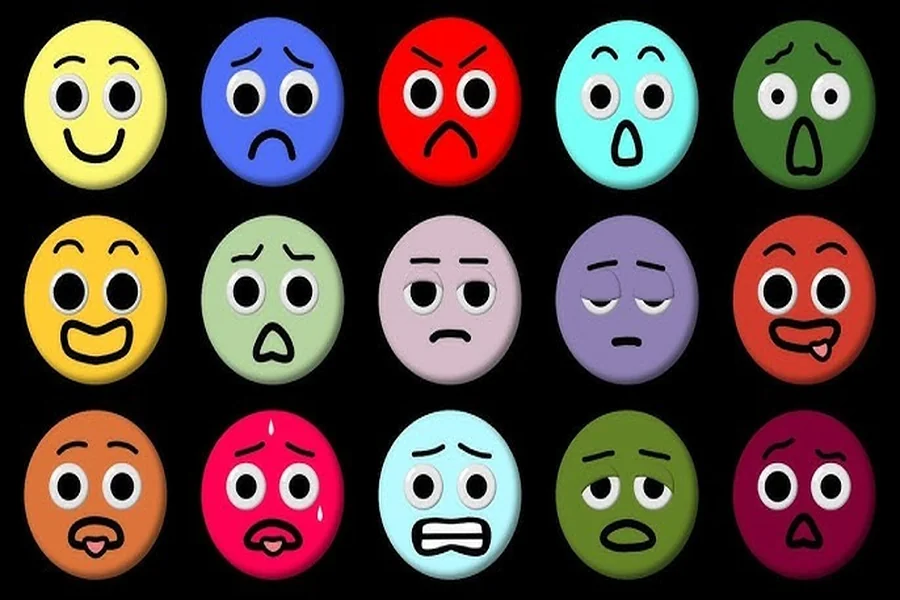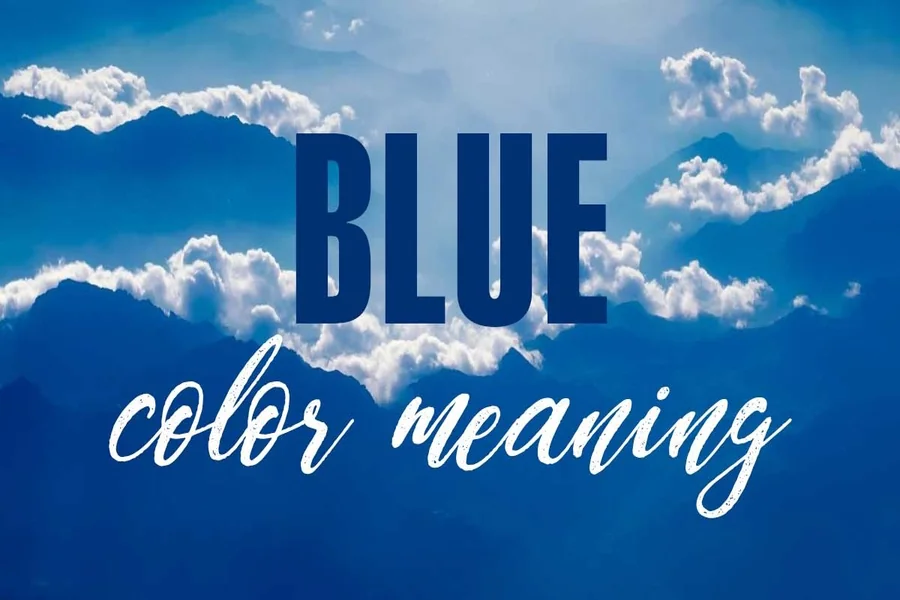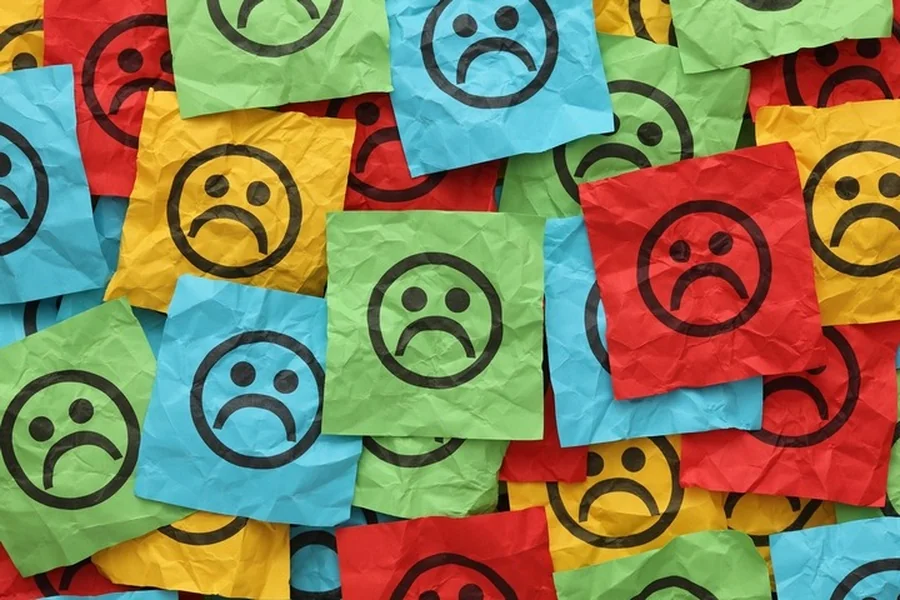Our lives are awash in color. They influence how we feel, think and even react. But what color means sadness? That’s not a one-size-fits-all question. They look differently to different cultures and different peoples. But there’s one color that has long been linked with sadness more than any other: blue.
You may be familiar with the expression, “feeling blue.” It’s all over the place — in songs, books and everyday speech. But why blue? Why not black or gray? Let’s examine how colors are linked to feelings and emotions & what those feelings do to us especially when we’re feeling blue.
Why Is Blue Linked to Sadness?
There is a long-standing association between blue and melancholy. Blue is often found in Western literature and art to portray deep, calm feelings. Like the smooth seas or cloudy skies. Blue isn’t loud. It’s calm and cool and reflective.
And there’s also some history behind the expression “feeling blue.” Some say it was the sailors themselves. When a captain perished at sea, the ship would hoist blue flags and paint a blue line along its hull. Eventually, “blue” became associated with mourning.
These days, when people say they’re feeling blue, that doleful color is a metaphor for low spirits or depression. That’s not to say blue is a “bad” color. It also symbolises tranquillity, serenity and trust. But for sadness, blue looms large.
Are Other Colors Linked to Sadness?
Though blue is the color most associated with sadness, it isn’t the only one. Gray is also a sad color to some people. Gray skies can feel heavy. It’s the color that is quiet and boring. It doesn’t command notice the way red or yellow does.
Black is also associated with sorrow, specifically in funerals or mourning attire. In many societies, people wear black to show respect for someone new who has died. It is the color of the end & of loss.”
Brown can read as heavy or tired. It is the color of dead leaves or dry earth. There’s no off-the-scale misery in a sad song, but it can evoke mopey or morose.
How Culture Changes Color Meanings
The meaning of colors vary somewhat everywhere. What’s a color for sorrow in one country will not be the same in another. In the West, black is associated with mourning. But in large parts of Asia, white is the color of grief and mourning.
In Brazil, all things purple are associated with mourning. Red may symbolize mourning in South Africa. This illustrates that while blue is the default sad color in much of the world, it’s not universally so.
Culture influences how we perceive colors. So when we wonder what color represents sadness, we need to also consider the powers of context.

Can Colors Affect Our Mood?
Yes, they can. You know about color psychology! Its goal: to explore how colors have the potential to influence what we feel and, perhaps more important, what we do. You may feel energized or cheerful as a result of, say, bright colors like yellow or orange. Colder colors like blue or gray might have the subconscious effect of invoking a sense of relaxation, while sadness.
Not that colors make you sad. But they can reflect or echo the way we’re already feeling. When you’re already feeling blah, being stuck in a gray or dimly lighted room can make you feel even glummer. “Even just a little bit of color or warm light may in fact draw your mood upward,” she said.
It’s why colors are important in institutions like schools, hospitals and homes. “What we see around us can have an impact on mental health and well-being.
Read Also : What Color Means Love
Why “Feeling Blue” Still Works Today
Yet as elderly as the phrase is, feeling blue is still in use every day. It’s straightforward and understandable. When we call someone or something blue, we don’t need a lot of explaining. We get it.
Songs like Blue Ain’t Your Color or Blue Monday illustrate how frequently this concept occurs in popular culture. The very words of the music genre “blues” are about emotion and often speak to loss, heartbreak or hurt.
The association with the color blue and sadness is more than a trend. It’s a piece of language and sentiment that many people still find resonant.

Using Color to Cope With Sadness
If you know certain colors play a part in how you feel, use it to your advantage. Wear bright colors, turn on a different light in your room or make the light warmer if you can to offset that.
That doesn’t mean you need to shy away from blue or gray. Sometimes, leaning into those colors can be part of what makes it all feel comforting in the end. Like, understanding color and how it affects you.”
It’s normal to be sad. If a color helps you take away it or makes you feel grounded, that’s okay, too.
Read : Cool Designs
Final Thoughts
So, what color means sadness? The majority of people will say: blue. It appears in speech, art and everyday affairs. But sadness is not the property of any one color. Gray, black and even brown can schlep sad connotations depending on where you live and how you see the world.
Colors connect deeply with emotions. They can help us communicate how we feel, or even make us feel better. Understanding what color is associated with sadness is one step in understanding the larger picture of how we are connected to the world around us.
FAQs
What is a word that describes sadness?
Sadness can be expressed using words such as sorrow, grief, despair and melancholy. Each has a nuanced usage specific to the level, or reason for emotion.
What colors represent emotions?
Colors often match emotions. Red can mean anger or love. Yellow often shows happiness. Blue can be both calm and sad. Gray may feel dull or tired.
What is the saddest color?
They say blue is one of the saddest colors. But some others may decide on gray or black. It’s a matter of personal feeling and cultural history.
Is gray a sad color?
It can be. Grey skies, grey rooms of even squirrel gray colours can often appear to be insipid and dead. But gray can feel calm or neutral as well, for some anyway.
How did “blue,” which is not specifically a word for sadness in every language, become the word that it is in English?
“Blue” was associated with sadness through language and history. Expressions like “feeling blue” and the blues music genre certainly solidified that association.




